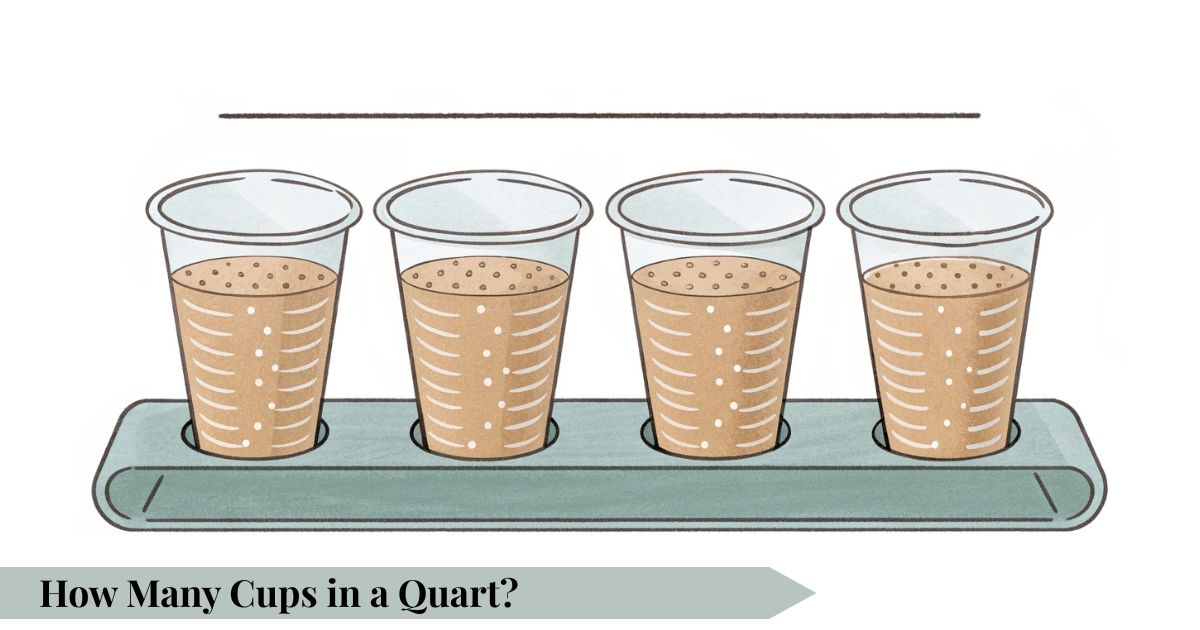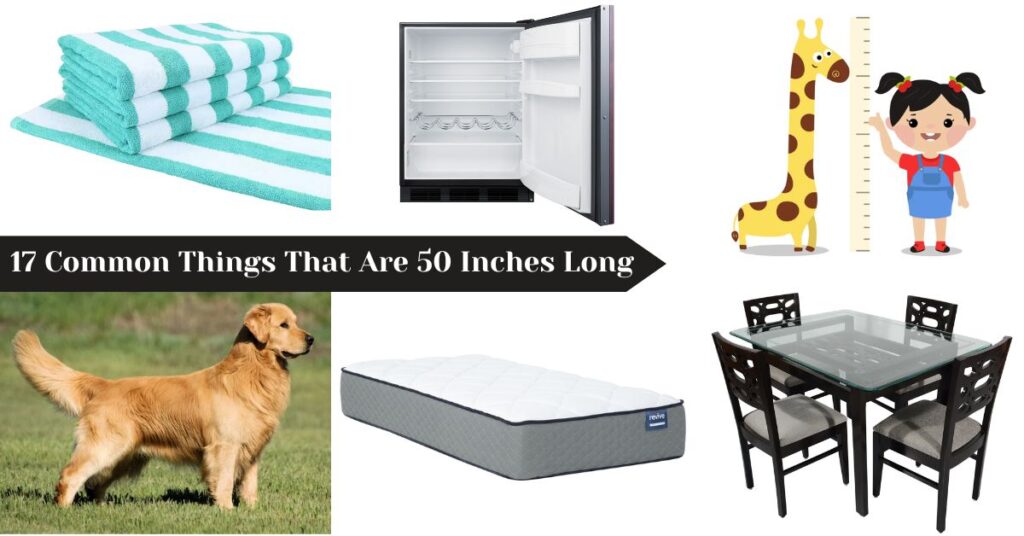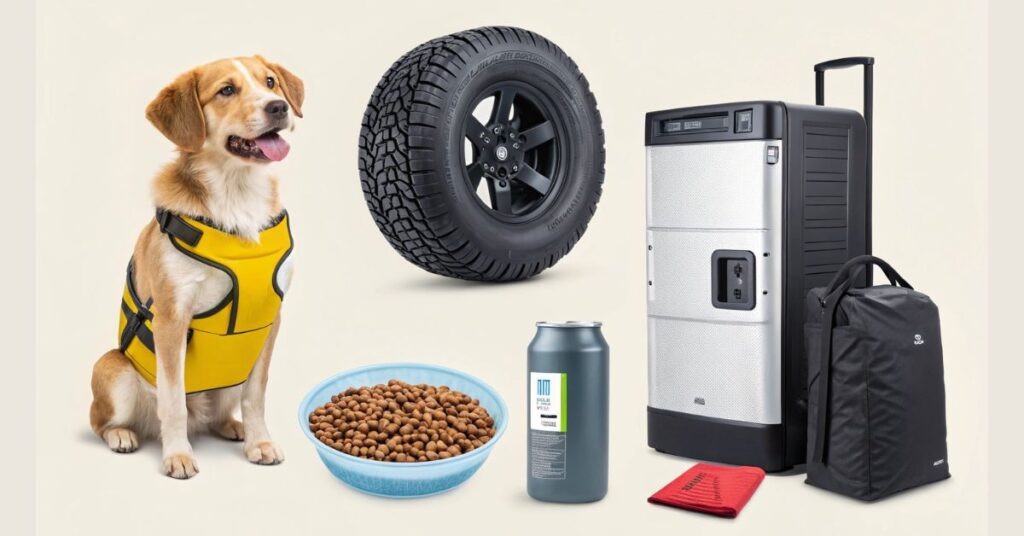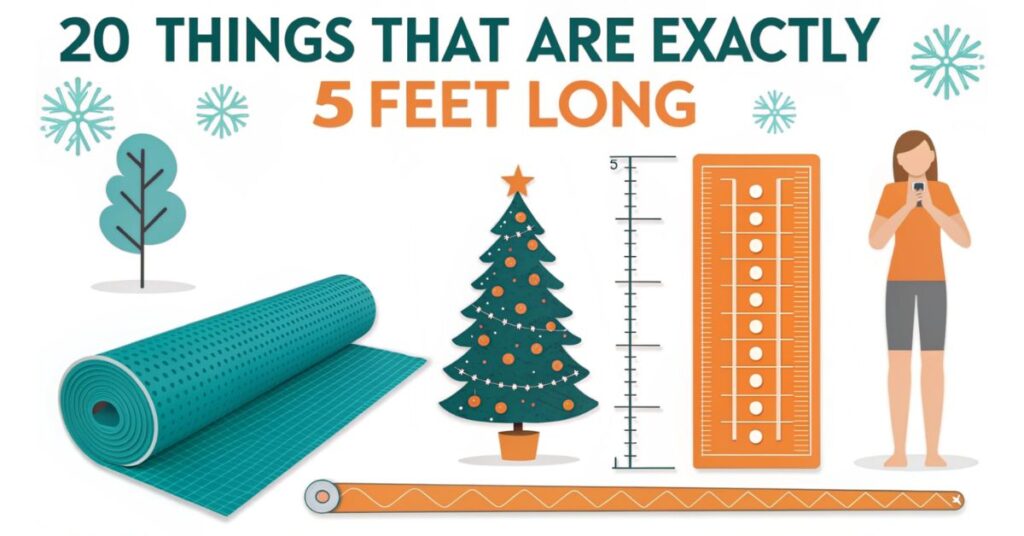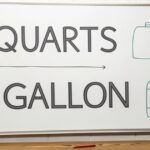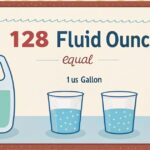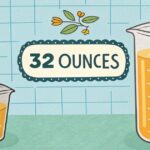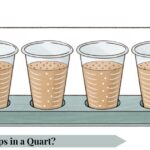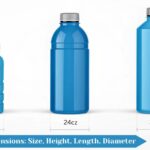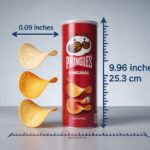Ever stood in your kitchen, staring at a recipe that calls for quarts while you’re holding a measuring cup? You’re not alone in this culinary confusion.
Let’s decode the quart-to-cup conversion mystery once and for all with practical examples you’ll actually use.
Printable Conversion Chart
| Quarts | Cups | Tablespoons | Fluid Ounces |
| ¼ qt | 1 cup | 16 tbsp | 8 fl oz |
| ½ qt | 2 cups | 32 tbsp | 16 fl oz |
| ¾ qt | 3 cups | 48 tbsp | 24 fl oz |
| 1 qt | 4 cups | 64 tbsp | 32 fl oz |
| 1.5 qt | 6 cups | 96 tbsp | 48 fl oz |
| 2 qt | 8 cups | 128 tbsp | 64 fl oz |
| 3 qt | 12 cups | 192 tbsp | 96 fl oz |
| 4 qt | 16 cups | 256 tbsp | 128 fl oz |
| 5 qt | 20 cups | 320 tbsp | 160 fl oz |
| 6 qt | 24 cups | 384 tbsp | 192 fl oz |
For fractional measurements, remember: ⅛ quart = ½ cup, ⅓ quart = 1⅓ cups, and ⅔ quart = 2⅔ cups. These odd fractions appear less frequently but prove valuable when halving or quartering recipes.
Example #1: Brewing the Perfect Pitcher of Iced Tea
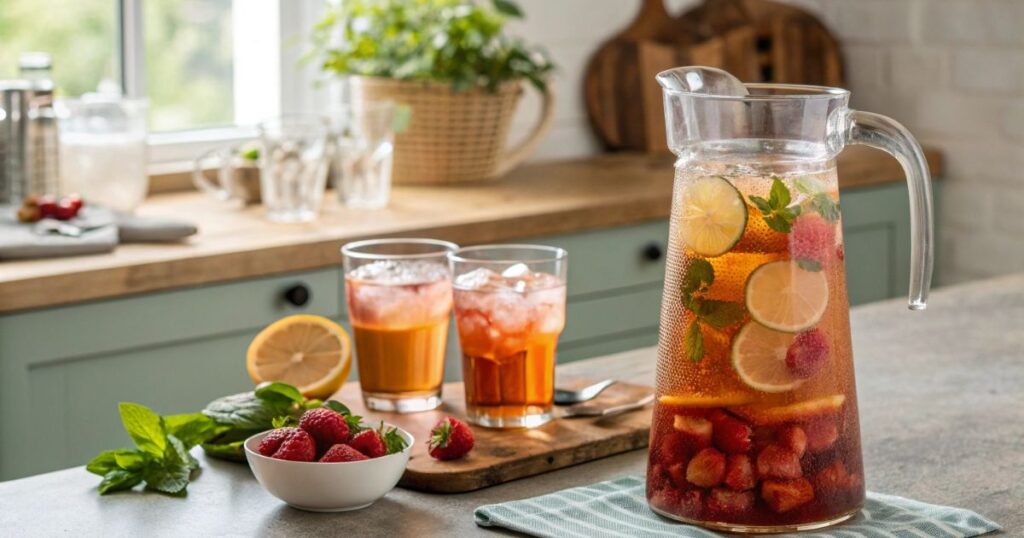
Summer afternoons demand cold beverages, and iced tea pitchers typically hold 2 quarts. That’s your first real-world application right there—you need exactly 8 cups of water to fill that standard glass pitcher sitting in your cabinet.
Most tea manufacturers recommend one tea bag per cup. With your 2-quart pitcher requiring 8 cups, you’ll steep 8 tea bags for perfectly balanced flavor. Restaurant kitchens use this exact formula when preparing their house tea.
The mistake? People eyeball the pitcher capacity and guess. They end up with weak, disappointing tea because they added 10 cups instead of 8, diluting the tea concentration beyond recognition.
Example #2: Soup Stock Preparation for Meal Prep
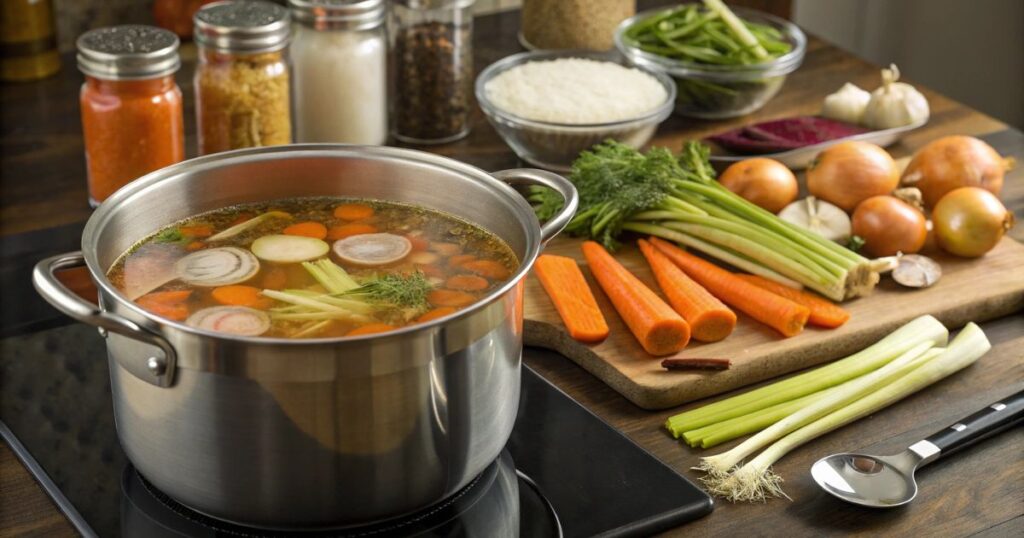
Home chefs who batch-cook know that soup stock recipes often call for 3 quarts of liquid—that’s precisely 12 cups. This measurement matters tremendously because stock concentration determines your final dish’s flavor profile.
When you’re combining vegetables, bones, and aromatics, those 12 cups create the proper ratio for extracting maximum umami richness. Too much water, and you’re simmering flavorless liquid for hours. Too little, and ingredients don’t circulate properly.
Storage becomes simpler with accurate measurements too. A 3-quart batch divides perfectly into six 2-cup containers, giving you portion-controlled freezer stock for weeknight cooking. Professional kitchens operate on these exact calculations.
Example #3: Baking Large-Batch Pancake Batter
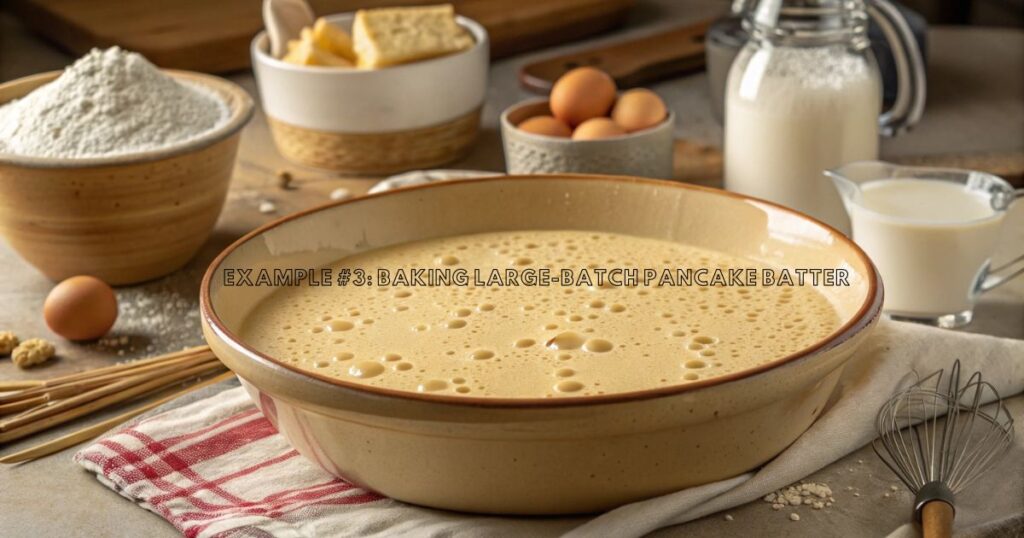
Weekend brunch for a crowd often requires 1 quart of pancake batter—that’s 4 cups of mixed ingredients yielding approximately 16-20 standard pancakes. The precision matters because batter consistency directly affects texture.
Too thick from undermeasuring liquid, and you’re serving dense, gummy pancakes. Too thin from adding extra cups beyond the quart, and they spread into crepe-like disasters on your griddle. That 4-cup sweet spot creates those fluffy, golden circles everyone loves.
Commercial breakfast establishments measure batter by the quart specifically for consistency across batches. They know a 2-quart container (8 cups) feeds roughly 8-10 people with standard appetites.
Example #4: Canning and Preserving Fresh Produce
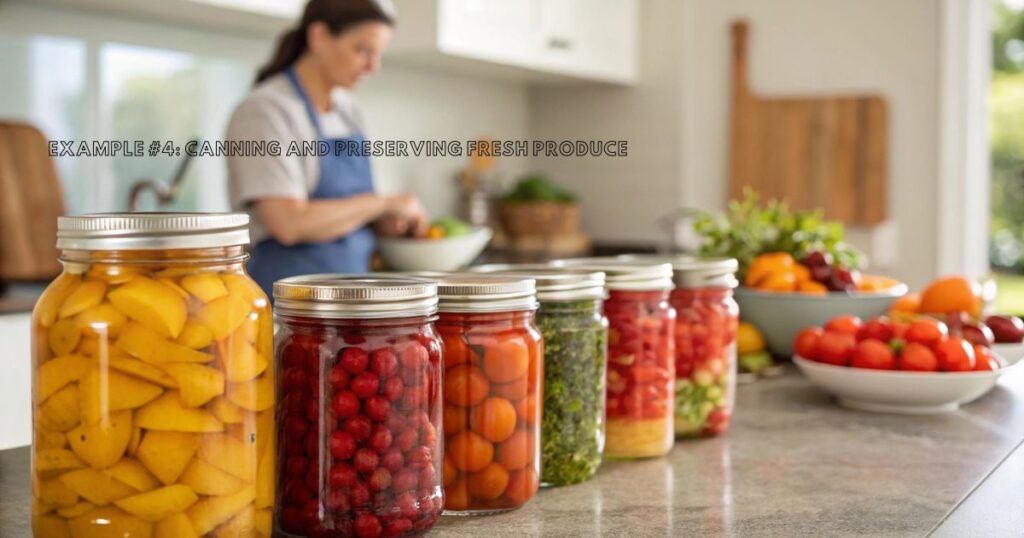
Home preservation enthusiasts work extensively with quart-sized mason jars, which hold—you guessed it—4 cups of contents. The USDA’s canning guidelines specify processing times based on these standard volumes.
When your tomato harvest yields enough for 6 quarts of sauce, you’re looking at 24 cups of product. This calculation helps determine how many jars you’ll need and whether your canner can accommodate the batch size.
Safety hinges on accurate measurements here. Pressure canning times change with volume, and mislabeling a 5-cup jar as “1 quart” could create hazardous under-processing. The stakes extend beyond convenience into food safety territory.
Example #5: Cocktail Mixing and Beverage Service

Party punch recipes frequently specify 2 quarts total volume—that’s 8 cups of mixed beverages. Professional bartenders calculate this translates to approximately 16 half-cup servings or 10-12 fuller pours.
The punch bowl mathematics get interesting when accounting for ice displacement. That 2-quart recipe might need a 3-quart bowl because ice will occupy roughly 25-30% of the total volume without contributing to the liquid measurement.
Mixologists in craft cocktail bars use this knowledge backward too. If they want to create 50 servings of a signature punch, they calculate: 50 servings ÷ 8 servings per quart = roughly 6.25 quarts needed, which equals 25 cups of base mixture.
Example #6: Pet Food and Water Portion Control
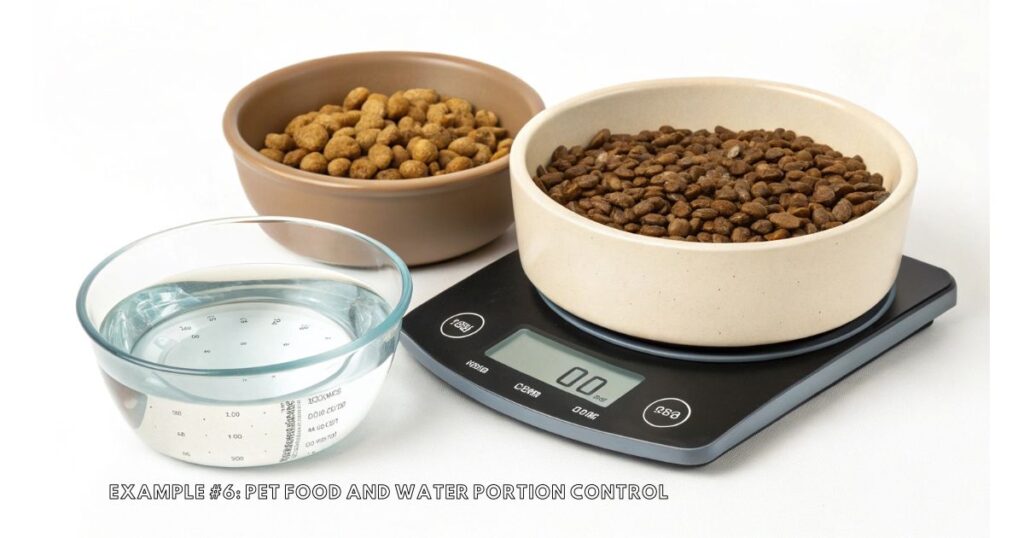
Veterinarians often recommend dogs drink approximately 1 ounce of water per pound of body weight daily. For a 32-pound dog, that’s 32 fluid ounces—exactly 1 quart or 4 cups of water refreshed throughout the day.
Pet owners managing multiple animals find this conversion invaluable. Three medium dogs might require 3 quarts (12 cups) collectively, helping you choose an appropriately sized water dispenser that won’t need constant refilling.
Travel carriers and portable bowls use these measurements too. A 2-cup travel bowl holds half a quart, perfect for a pit stop during a road trip with your furry companion.
Basic Conversions Pints, Gallons, and More
The complete US liquid measurement hierarchy flows like this: 1 gallon = 4 quarts = 8 pints = 16 cups = 128 fluid ounces. Each relationship builds on doubling or halving the previous unit.
Pints occupy the middle ground between cups and quarts—each pint holds 2 cups, meaning 2 pints equal 1 quart. This intermediate measurement appears frequently in smaller recipes and beverage containers.
For international cooks, 1 quart equals approximately 0.946 liters, though most round to 1 liter for practical purposes. The metric conversion isn’t perfectly even, which explains why European recipes rarely reference quarts directly.
| Unit | Equals |
| 1 gallon | 4 quarts, 16 cups |
| 1 quart | 4 cups, 2 pints, 32 fl oz |
| 1 pint | 2 cups, 16 fl oz |
| 1 cup | 8 fl oz |
FAQ’s
How many cups are in a quart?
One quart contains exactly 4 cups. This conversion remains constant for all liquid measurements in the US customary system. Simply multiply the number of quarts by 4 to determine cups.
How many cups fit in 6 qt?
Six quarts equal 24 cups (6 × 4 = 24). This volume would fill a large stockpot or multiple containers, representing a substantial quantity for most cooking applications.
Is 1 quart 6 cups?
No, 1 quart equals 4 cups, not 6. This common misconception likely stems from confusing quarts with the 6-cup mark on some measuring containers. Remember the formula: multiply quarts by 4.
How much do 6 quarts hold?
Six quarts hold 24 cups, 12 pints, or 1.5 gallons. In metric terms, that’s approximately 5.7 liters. This capacity suits large-batch cooking like soups, stews, or beverages for gatherings.
Conclusion
The quart-to-cup conversion boils down to one simple truth: multiply by 4, and you’re there. Whether brewing tea, canning tomatoes, or mixing cocktails, this ratio unlocks confident cooking without constant calculator dependency. Print that reference chart, practice with these real-world examples, and watch kitchen confusion transform into culinary confidence.

Welcome to Swiftnis.com! I manage this site to provide accurate and easy-to-understand measurement guides. My goal is to make measurements simple for everyone. Whether you need Conversions, Tools, or Tips, I’m here to help. Enjoy exploring and measuring with confidence!
